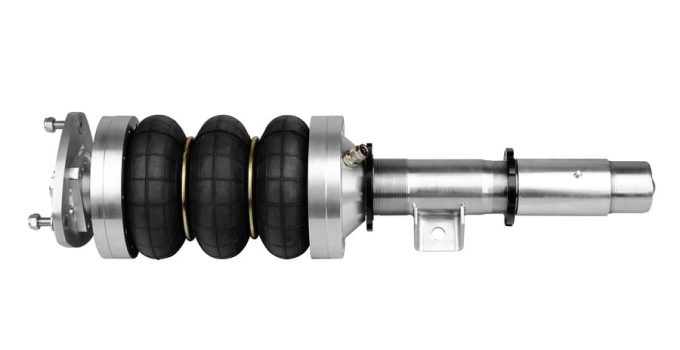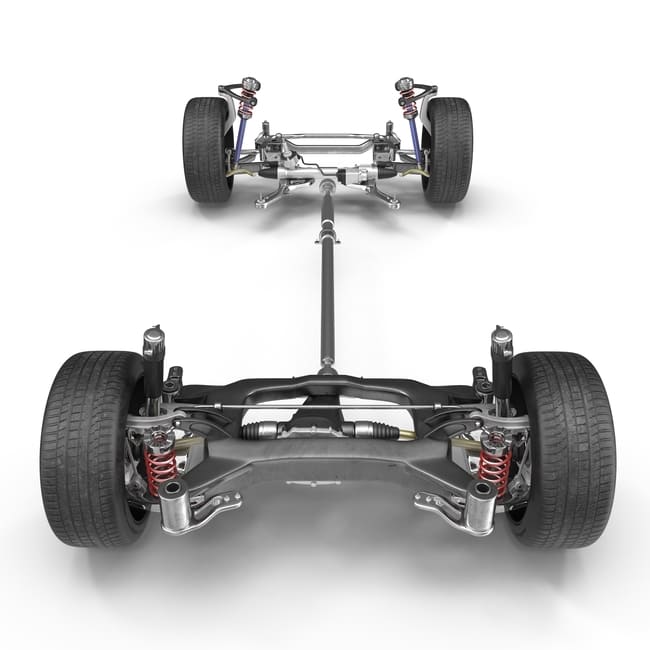
The air suspension system offers advantages, but also has disadvantages. In order to understand this and the corresponding background, you first have to deal with the structure of such a system. We then look at the individual properties and assign them to the categories of advantages and disadvantages of air suspension. In general, this type of suspension is rarely found on passenger cars, while trucks often have it. This allows you to decide overall whether you really want to retrofit a universal air suspension.
Contents
What types of springs or wheel suspensions are there?

Even if there are very different types of wheel suspension, most modern cars today have classic wheel suspensions. In most cases, these are dampened with the help of a so-called spring strut. The active elements are often coil springs in connection with so-called telescopic shock absorbers. In addition, leaf springs are sometimes used for vehicles or axles that are particularly heavily loaded.
The purpose of the suspension is to convert any hard impacts generated by driving over bumps so that you only notice soft vibrations. This ensures more driving comfort. In addition, the suspension ensures that your wheels never lose contact with the ground, as the contact pressure is improved according to the current road situation. This in turn ensures more safety, since traction is essential for staying in lane, but also for the desired braking behavior. Further spring elements are located in the area of the vehicle seats and your tires complete these systems. In addition to the so-called sprung mass (this includes everything on the car that is dampened by the suspension), there are also so-called unsprung masses. These include, for example, your wheels, the braking system (i.e. brake discs, brake calipers and brake pads) and some suspension elements. Basically, the goal of vehicle design is to reduce these unsprung masses as much as possible. This improves the vehicle's drivability tremendously because the vibrations that are noticeable in the structure are minimized. So that your car doesn't simply continue to vibrate, these vibrations are additionally dampened with the shock absorbers, which are also available in different versions, although the telescopic shock absorbers can be described as quasi-standard.
How does it work an air suspension?
The function of an air suspension integrates the tasks of damping and suspension. This type of system was developed back in the 1950s. A compressor is responsible for providing the compressed air required to fill the rubber bellows on the wheels with air. As a result, they can then cushion shocks and also dampen the vibrations afterwards. As a retrofit system, the classic suspension can also be converted into an Airride chassis. In general, a distinction is made between systems that are single-circuit or double-circuit. With the latter system, each side of the vehicle can be controlled separately and thus also regulated.
What are the advantages of air suspension in cars?

The main advantage of this type of suspension is the comfort achieved. This is because the elastic rubber bellows are much better suited to leveling out bumps in the road. Classic dampers cannot keep up in this area. In addition, air suspension offers the opportunity to increase the chassis load capacity, which is particularly important for commercial vehicles. In addition, this system allows the properties of the chassis to be adapted to the current conditions. The electronic control regulates the shock absorber force adaptively and in the shortest possible time. Road condition, load and driving style are taken into account. Some vehicle manufacturers use air suspension in cars for other comfort features. For example, with the Tuareg, VW automatically lowers the rear loading sill when you open the trunk. After closing the trunk lid, the rear is then raised again accordingly. In addition, the ride height can also be reduced when driving fast on the motorway, for example to reduce vehicle air resistance. Theoretically, this is also reflected in consumption, although this effect on fuel efficiency is rather small. The same type of level control can be used if you like driving your car off-road.
What are the disadvantages of air-suspension of cars?

An important disadvantage is that the components of these can only be repaired to a limited extent. If there is a leak, the vehicle system fails completely in many cases. If there is only a gradual loss of air, the compressor can compensate for this to a certain extent by pumping intensively. For this reason, air suspension in cars must be checked and serviced regularly. In addition, subsequent installation causes high costs. This is because a relatively large number of components are required to install universal air suspension in your car. These include the air compressor, the air springs, but also a whole lot of compressed air hoses. In addition, the pneumatics also require a water separator and a suitable tank. The latter must of course be emptied regularly. This also applies in particular in winter so that the water separated there does not freeze and thereby cause major damage.
In addition, the components used are particularly susceptible to contamination. This not only applies to salt in the cold season, but also, for example, to paint splashes during painting work. The same applies to oil and brake fluid residues, which attack the rubber air cushions and can lead to leaks. Also note that when you park the vehicle, you must ensure that the air suspension is never completely depressurized.
Conclusion
Air suspension is often only used in premium vehicles or trucks. Therefore, they are mostly used by tuning fans as a retrofit set. There are different manufacturers of air suspension, which offer both universal components and special variants for certain models. Now that you are fully informed about the important advantages and disadvantages, you can decide whether such a system brings you an additional benefit.
A tip from CarTipsandmore:
< ol>
